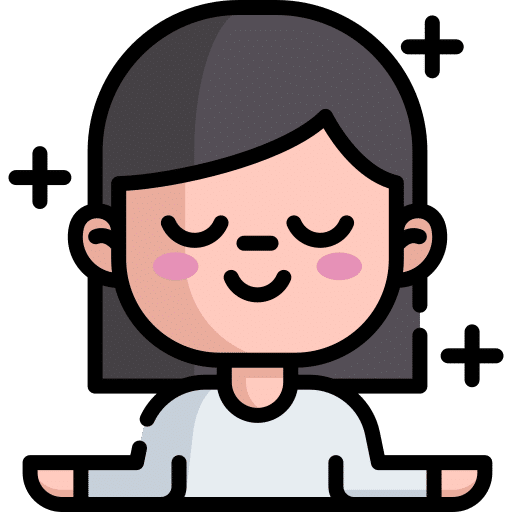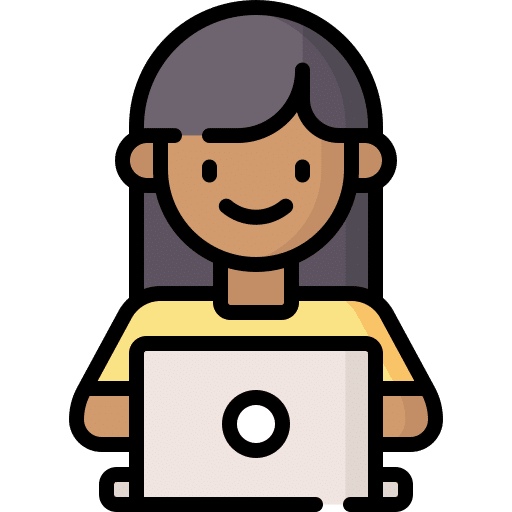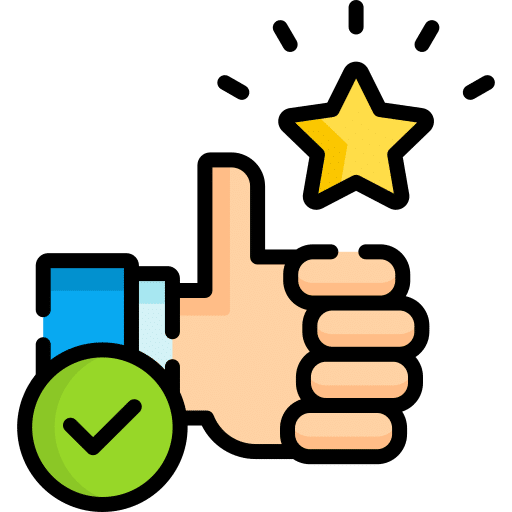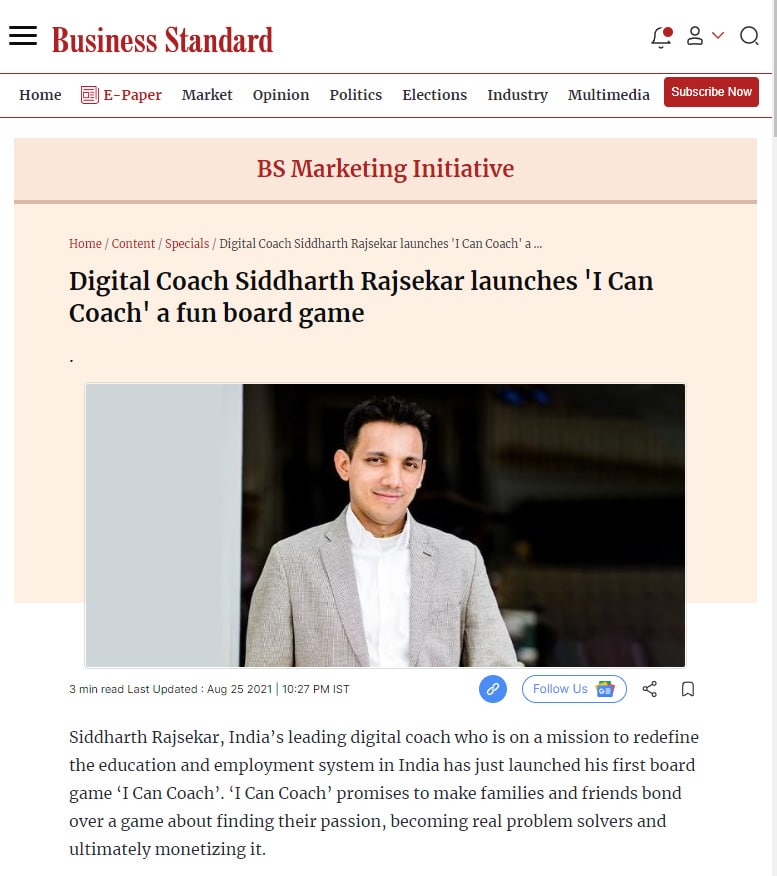The Ultimate Guide to Coach
Working Professionals
About The Author
Siddharth Rajsekar
Founder - Internet Lifestyle Hub
Siddharth Rajsekar aka Sidz is the founder of the Internet Lifestyle Hub, one of the world’s largest communities for coaches, trainers, teachers, and experts with over 20,000 members.
As an acclaimed lifestyle entrepreneur, Business World's 40 under 40 award winner, and international speaker, Siddharth has trained over 500,000 people in the last 10 years. Recognized as one of India’s leading and sought-after “info-marketing” specialists, Siddharth has worked closely with renowned International experts like Robert Kiyosaki, T Harv Eker, Tony Robbins, Brian Tracy, and Jack Canfield.
After running many multi-million-dollar online campaigns for companies and helping people make money online in the last 10 years, Siddharth has developed and perfected the Freedom Business Model. The Freedom Business Model focuses on helping people take their expertise online and building a super-profitable digital coaching business, without an office or employees.

His mission is to reform the education and employment system by building a new breed of Digital Leaders, based on the core principles of humanity and simplicity and by enhancing one’s social skills, happiness, and overall productivity.
He is the author of this book, “You Can Coach” which decodes all the steps for experts to successfully PLAN, LAUNCH, and GROW a digital coaching business to six figures a month. Wearing multiple hats, Siddharth is a husband of a loving wife, a father of 2 boys, a minimalist, futurist, spiritualist, a YouTuber who has published over 300 videos, as well as a podcast host!
1. Are You Cut Out To Coach Working Professionals?
A “working professional” is typically someone who is employed in a particular field or industry and earns a living through their work. They may be employees of a company or work as freelancers or independent contractors. Working professionals can be found in a wide range of fields, from finance and law to healthcare and technology. They are typically skilled and knowledgeable in their area of expertise and are committed to ongoing learning and professional development. Working professionals may hold various job titles, including manager, executive, consultant, engineer, designer, or analyst, among many others.
Working professionals are an essential part of the modern economy, contributing their skills and expertise to a wide range of industries and fields. The needs of a working professional are many and varied, but they are essential for maintaining a motivated and productive workforce. Most organizations wish to attract and retain top talent and build a workforce that is motivated, engaged, and committed to success.
Most working professionals often face a wide range of challenges in their careers, from navigating complex organizational structures to managing work-life balance. Working with a coach can be very helpful because it can be difficult to find the assistance and direction required to get past these barriers. Coaching is designed to improve employee engagement, boost confidence, increase retention, strengthen relationships, and help companies invest in their employees so they can reach their highest potential.
Here's why having a coach is important for a working professional:
A coach can provide valuable insights and expertise. They have experience and knowledge in their respective fields, which can be incredibly helpful for a working professional. Whether it's improving leadership skills, navigating career transitions, or developing new strategies, a coach can offer guidance based on their own experiences and industry best practices. They can help professionals gain a fresh perspective, identify blind spots, and explore new ideas and approaches.
The journey of a working professional can be challenging and demanding. Having a coach by their side can offer much-needed support, encouragement, and motivation.
A coach can help professionals set clear goals, create action plans, and hold them accountable for their progress.
Coaches provide a safe and confidential space for professionals to discuss their challenges, fears, and aspirations. A coach can also offer constructive feedback and help professionals develop self-awareness, enabling them to identify areas for improvement and work toward their personal and professional growth.
If you wish to coach working professionals, you first need clarity on your market's needs.
What does your market want? If you’re targeting businesses, most wish to increase sales, profits, cash flow, and efficiency. If you can solve that problem in whatever micro-niche you are in, they will be ready to pay you, whatever the price.
If you’re targeting the career growth niche, people who want to grow up the corporate ladder, understand what they want. They probably want to upgrade their skills to be more relevant in the marketplace. They may aim for a higher pay package or add more value to the organization.
If you can provide any kind of solution that can help them achieve that particular goal, they’ll be ready to pay you money for your services. You can add a focus on soft skills, technical skills, or any particular specialization. If they’re able to acquire that knowledge, they can get a pay raise or a better pay package. You can either go method-focused or problem-focused when you’re positioning yourself.
The coaching profession is not regulated in all countries, which means that the qualifications required to become a coach may vary depending on the location and industry. However, certain qualifications and credentials can help a coach establish their expertise and credibility when working with working professionals.
Education and Training:
Many coaches hold advanced degrees in fields such as psychology, counseling, or business. Additionally, many coaching training programs offer a variety of specialized training in areas such as leadership, communication, and career development. A coach for working professionals should have education and training that is relevant to the industry or field in which their clients work.
Professional Experiance:
Coaches should have significant professional experience in the industry or field in which their clients work. This experience helps them to understand the unique challenges and opportunities that working professionals face, and to provide relevant and practical advice and support.
Continuing Education and Professional Development:
Coaches should also be committed to ongoing education and professional development. This may include attending conferences, workshops, and other training opportunities to stay up-to-date on the latest trends and best practices in coaching. It also involves being open to feedback and coaching themselves, as well as participating in a community of coaches to learn from and grow with one another.
Personal Qualities and Characteristics:
In addition to the above qualifications, a coach for working professionals should possess certain personal qualities and characteristics. These include strong communication and interpersonal skills, empathy, active listening, critical thinking, problem-solving, adaptability, and professionalism.
Coaches for working professionals should possess qualifications such as accreditation from a professional coaching organization, education and training, professional experience, continuing education and professional development, and personal qualities and characteristics. By having these qualifications, a coach can provide the guidance and support needed to help their clients achieve their goals and succeed in their careers.
Coaches can help their clients identify areas of their lives that may be out of balance, and provide strategies for addressing these issues. This can include finding ways to manage stress, improving time management, and identifying ways to prioritize. Self-care.
Working with a coach can be an incredibly valuable resource for working professionals looking to overcome challenges and reach their full potential.
Coaches can help with goal setting and accountability, career advancement, skill development, stress management, and work-life balance. By providing personalized guidance and support, coaches can help their clients achieve their goals and develop the skills and mindset necessary for long-term success.
Coaching is a complex and demanding profession that requires a combination of skills and qualities to be effective.
When it comes to coaching working professionals, the coach must possess certain qualities to help their clients navigate the challenges and complexities of their work lives.
EQ or emotional intelligence:
This is just as important for a coach working with professionals as it is for any other coaching context. Working professionals face a unique set of challenges, such as high-pressure environments, complex relationships, and demanding workloads. A coach with high EQ can help professionals navigate these challenges and achieve their goals by:
Building Trust:
Professionals are often hesitant to open up about their struggles and vulnerabilities, especially in a work setting. A coach with a high EQ can create a safe and supportive environment where professionals feel comfortable sharing their thoughts and emotions.
Developing Communication Skills:
Effective communication is crucial in any professional setting, and a coach with high EQ can help professionals improve their communication skills. This includes active listening, empathetic communication, and conflict resolution.
Managing emotions:
Professionals may experience a range of emotions in the workplace, from stress and anxiety to frustration and disappointment. A coach with high EQ can help professionals manage these emotions healthily and productively, reducing the risk of burnout and promoting overall well-being. A coach with high EQ can connect with their clients, understand their unique challenges, and provide effective support and guidance.
Active Listening:
One of the most important qualities of a coach is their ability to actively listen to their clients. This involves being fully present and attentive and showing a genuine interest in what the client is saying. Active listening is critical to building trust and rapport with the client and understanding their needs and goals.
Empathy:
Coaches must also possess a high degree of empathy, or the ability to understand and share the feelings of their clients. This allows the coach to connect with their clients on a deeper level, and provide support and guidance that is tailored to their specific needs and circumstances.
Expertise and Experience:
A coach for working professionals should have relevant expertise and experience in the field or industry in which their clients work. This helps the coach understand the unique challenges and opportunities that their clients face and provide relevant and practical advice that can help them succeed.
Flexibility and Adaptability:
Working professionals often have complex and demanding schedules, which means that a coach must be flexible and adaptable to meet their clients' needs. This may involve working outside of regular business hours or adjusting their coaching approach to accommodate the client's specific situation.
Professionalism and Ethics:
Coaches must maintain a high level of professionalism and ethics at all times. This includes respecting client confidentiality, maintaining clear boundaries, and adhering to ethical guidelines and standards.
Strong Communication Skills:
Coaches must have strong communication skills, both verbal and written, to effectively convey their message and support their clients. This includes the ability to explain complex ideas clearly and concisely, as well as provide feedback and guidance that is constructive and actionable.
By possessing these qualities, a coach can provide the guidance and support needed to help their clients achieve their goals and succeed in their careers.
2. Creating A Curriculum
Designing a curriculum for working professionals involves several key steps. You will first need to work on the attitude of working professionals. This is an important factor in determining their success and satisfaction in their career.
Here are some key attitudes that you can teach working professionals to cultivate:
By cultivating these attitudes, working professionals can position themselves for success and fulfillment in their careers.
The next step is to define the learning outcomes and the purpose of the curriculum.
Identify the goals and objectives:
What skills and knowledge do you want the participants to acquire? What do you want them to be able to do at the end of the course? You can use this information to define the scope of the curriculum.
Understand the needs of the target audience:
It is essential to understand the needs and expectations of the working professionals who will be taking the course. You can gather this information by conducting surveys, interviews, and focus groups. This information can help you tailor the curriculum to the specific needs of the audience.
Define the course structure:
Once you have defined the goals and objectives of the curriculum and understood the needs of the target audience, you can begin to define the course structure. This includes determining the number of sessions, the duration of each session, the topics to be covered, and the teaching methods.
Choose appropriate teaching methods:
Working professionals may have limited time and different learning styles, so it is important to choose teaching methods that are effective and engaging. Some examples include online lectures, case studies, interactive exercises, and discussions.
Develop course materials:
Based on the course structure and teaching methods, you can create course materials such as lesson plans, handouts, and multimedia resources. These materials should be designed to help the participants achieve their learning outcomes.
Implement and evaluate the curriculum:
Finally, you can implement the curriculum and gather feedback from the participants. You can use this feedback to make improvements and adjustments to the curriculum for future iterations.
Remember to keep the curriculum relevant to the needs of the target audience and make it practical and engaging to help working professionals apply the knowledge and skills they acquire in the workplace.
Developing course materials for working professionals involves several key steps:
Determine the learning outcomes:
The first step is to determine the learning outcomes that the course materials should achieve. This will help guide the development of the course materials and ensure that they are relevant and effective.
Choose appropriate content:
Choose content that is relevant and applicable to the target audience. Use practical, real-world examples that can help working professionals apply the knowledge and skills they acquire in the course to their jobs.
Develop learning activities:
Create learning activities that help the participants engage with the content, such as case studies, simulations, and exercises. These activities should be designed to help the participants apply the concepts they learn in the course to their work.
Create instructional materials:
Create instructional materials that effectively communicate the content and learning objectives. These materials can include slide decks, handouts, infographics, and multimedia resources. Keep the materials concise, visually appealing, and easy to understand.
Incorporate assessment tools:
Develop assessment tools that can help participants evaluate their progress and mastery of the material. These tools can include quizzes, tests, and assignments
Review and revise the course materials:
Finally, review and revise the course materials to ensure that they are effective and meet the learning objectives. Use feedback from participants and instructors to make improvements to the course materials.
Sourcing content for a curriculum involves several key steps:
Define the scope of the curriculum:
The first step is to define the scope of the curriculum, including the learning objectives, target audience, and specific topics to be covered. This will help you identify the types of content that are relevant and necessary for the curriculum.
Conduct research:
Identify sources of content for the curriculum. This can include textbooks, articles, reports, case studies, and other publications. You can also search for online resources, such as webinars, podcasts, and videos. The initial phase of creating a curriculum will involve intensive research. Have leaders in this industry on your radar and model them. Study how they have structured their programs on Google, YouTube, Instagram, and podcasts. If you invest in their programs, you’ll get a lot of ideas on precisely what they are doing to achieve that kind of success.
Evaluate the quality of the content:
Evaluate the quality of the content to ensure that it is accurate, up-to-date, and relevant to the learning objectives. Consider the credibility of the source and the expertise of the author.
Determine the format of the content:
Determine the format of the content that will work best for the curriculum. This can include written materials, audio and video resources, and interactive content.
Adapt and customize the content:
Meet the specific needs of the curriculum and the target audience. Consider adding examples and case studies that are relevant to the participant's work environment.
Obtain permission to use copyrighted material:
If you plan to use copyrighted material, such as excerpts from books or articles, be sure to obtain permission to use the content from the copyright owner.
A good curriculum typically includes the following elements:
Clear learning objectives:
The curriculum should have clear and measurable learning objectives that define what knowledge and skills students are expected to acquire by the end of the program.
Sequenced content:
The curriculum should be organized in a logical and meaningful sequence that builds upon prior knowledge and skills, and enables students to achieve the learning objectives.
Relevant and engaging content:
The curriculum should be designed to be relevant to the needs and interests of the learners, and should be presented in a way that is engaging, interesting, and inspiring.
Multiple modes of learning:
The curriculum should incorporate a variety of instructional strategies and techniques that support different learning styles and enable students to learn in ways that are meaningful and effective for them.
Assessment and feedback:
The curriculum should include appropriate assessments that allow students to demonstrate their knowledge and skills, and should provide regular and meaningful feedback to help them improve their performance.
Continuous improvement:
The curriculum should be regularly reviewed and evaluated to ensure that it remains relevant, effective, and up-to-date with current trends and best practices in the field.
A coach working with professionals can use a variety of techniques to support their clients in achieving their goals and overcoming challenges.
3. Top Tools To Use As A Coach
There are three concepts to follow before choosing a tool.
Choose The Best
Don't just pick a tool because it's cheap. "Don't be cheap on your journey to greatness." You want to be great. Don't be cheap. In other words, just because the tool is cheaper, don't pick it. Pick what is best, pick something that has great customer support, and pick something that has been built for that purpose.
Aim For Mastery
It is not about the tool. It is about how you use the tool. For example, Photoshop is a tool. Anyone can download Photoshop, but how you design and how you aesthetically use the tool are going to determine the results. You've got to aim for mastering the tools, which is very important.

Social Media
You must have a social media presence when people look for you. You have to have a Facebook page and an Instagram account; you have to have all these things out there, about what you do and how you do it. Don't try to be someone else because you think they're cool. The main thing is to be yourself. And then you're going to attract people who need to hear what you have to say because your journey is unique. Your stories of the obstacles you overcame, the principles that helped you, and the books you read, that's your unique story, and it's different from anyone else's. And so think about being real, authentic, and vulnerable.
You have to be doing Instagram Live and Facebook Live. You have to be recording those. And in order to be in their archive, you must have a Facebook channel or at the very least be doing Facebook videos that people can watch. You must do all of these things as well as write a blog. You can record up to ten minutes of podcasts and share your point of view. You shared something you read in a book last night that touched you. You just read a newspaper account about something that ticked you off; People are interested in learning about new products and services. And you're developing a relationship.
Social media platforms like LinkedIn and Twitter can be used for networking, sharing insights, and promoting coaching services. LinkedIn and Twitter are popular social media platforms that coaches can use to establish their professional brand, connect with clients and colleagues, and share valuable content.

LinkedIn
Create a professional profile with LinkedIn to create a professional profile that showcases your coaching expertise and experience. Your profile should include a professional headshot, a summary of your coaching services, and endorsements from clients or colleagues.
Use LinkedIn to connect with clients and colleagues in your writing coaching niche. You can use LinkedIn to search for and connect with individuals who may be interested in your coaching services.
Share valuable content related to coaching, personal development, and leadership.
You can share articles, videos, and infographics that provide insights and tips on achieving personal and professional goals.
Participate in discussions and connect with like-minded individuals in your coaching niche. You can share your expertise and contribute to discussions that may help you gain more exposure and credibility.

Twitter
: Use this to create a professional profile that highlights your coaching services and experience. Your profile should include a professional headshot, a brief bio, and links to your website or blog. Use Twitter to share valuable content related to coaching, personal development, and leadership. You can share short tips, quotes, and links to articles or blog posts.
Use hashtags on Twitter to increase your visibility and connect with individuals interested in coaching or personal development. You can use popular hashtags such as #coaching, #personaldevelopment, and #leadership.
Twitter to engage with clients and colleagues in your coaching niche. You can reply to tweets, participate in discussions, and retweet content that may be of interest to your followers.

Calendly
It’s a simple tool to set up your meetings and available time slots. You can try this tool out, it starts with a free version. There is an option to sync with Zoom in their premium version. As soon as someone books a time slot with you, a Zoom link automatically gets created and sent to them. This will save you a lot of time. All you need to do is open your calendar and click on the Zoom link to start your meeting.

Mint
If you want to get your personal finances in order and get all your bank accounts integrated into one place, go to mint.com, where you can set up a free account and set your budgets and plan your money management.
Payment Gateways
While all the above systems are core to your business, it’s never complete until you have your payment gateways set up to make it smoother for you to collect payments and track your sales.
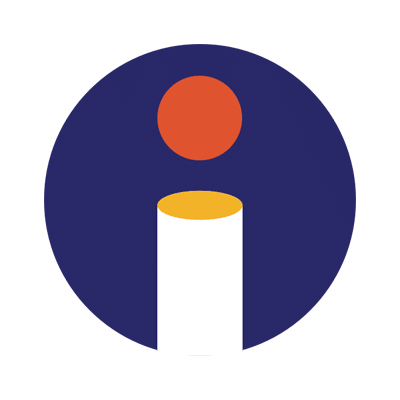
1. Instamojo - If you are based in India, this is one of the best payment collection engines. It’s quite easy to set up your account if you already have your company and bank accounts set up. You can create different products and payment links in this system. Once set up, you can share the payment link with your prospects, where they will be able to make a payment via credit card, debit card, net banking, and other options. The best part is that once the payment is received, you will be able to track all your data on a single dashboard. Additionally, you will also be able to process refunds and send messages to your customers from this platform.
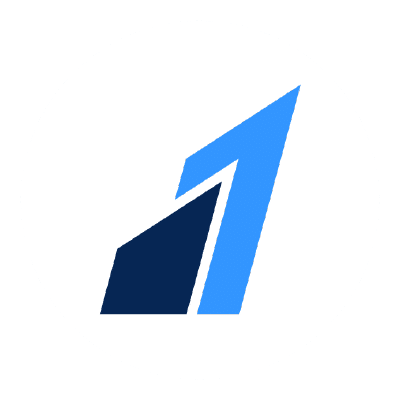
2. RazorPay - One of the best payment collection engines if you reside in India, it has an API integration with other payment engines

Online Survey Tools
Survey tools like SurveyMonkey and Google Forms can be used to collect feedback from coaching clients, assess their progress, and identify areas for improvement.
SurveyMonkey and Google Forms are online survey tools that coaches can use to gather feedback, conduct research, and assess client satisfaction. Conduct client feedback surveys with SurveyMonkey or Google Forms to create surveys that gather feedback from your coaching clients. You can use these surveys to assess client satisfaction, gather testimonials, and identify areas for improvement. You can use these surveys to identify trends, gather data on your target audience, and assess the competition. You can use these surveys to gather information on client goals, preferences, and learning styles.


Project Management Tools
Tools like Trello and Asana can be used for managing coaching projects, setting goals, and tracking progress.
Project management tools are used by coaches to stay organized, manage their coaching business, and collaborate with clients and colleagues. Manage client projects, including coaching sessions, action plans, and follow-up tasks. You can create boards for each client and use cards to organize tasks, deadlines, and progress. Plan and organize content for your coaching business, including blog posts, newsletters, and social media content. You can create a board for each type of content and use cards to plan, draft, and publish that content. Use Trello to manage personal tasks and to-do lists. You can create a board for personal tasks and use cards to organize tasks by priority and deadline.
Video conferencing platforms:
Platforms like Zoom, Skype, and Google Meet can be used for one-on-one or group coaching sessions, as well as for delivering live webinars and virtual workshops.
Articulate, Captivate, and Camtasia:
These video capture and editing tools for Windows are popular e-learning authoring tools used by educators to create interactive online courses. Here are some ways that a coach can use these platforms to enhance their coaching practice:
Create interactive content:
Use Articulate, Captivate, or Camtasia to create interactive e-learning content such as quizzes, simulations, and games. Use Articulate or Captivate to create e-learning courses that provide a structured approach to coaching. You can create courses that include videos, interactive content, and assessments, and that are accessible to your clients online.
Enhance your coaching sessions:
This can help you engage your clients and make the coaching experience more effective. This can help you engage your clients and make the learning experience more interesting and effective.
Record and edit videos:
Use Camtasia to record and edit videos of your coaching sessions, or to create instructional videos that complement your coaching services. You can add annotations, effects, and captions to make your videos more engaging and effective.
Create e-learning courses:
Virtual whiteboards: Digital whiteboards like Mural and Miro can be used for brainstorming, collaboration, and visual thinking.
MURAL and Miro are digital collaboration tools that allow teams to collaborate and work together in real-time. Here are some ways that a coach can use these platforms to enhance their coaching practice.
Facilitate remote workshops for your coaching clients. You can use these platforms to create virtual whiteboards, share files, and conduct activities that help your clients achieve their goals.
Provide visual aids and resources:
You can use these platforms to create infographics, charts, and diagrams that help your clients understand complex concepts or data.
4. A Day In The Life Of A Coach For Working Professionals
A day in the life of a coach can vary greatly depending on the coach's specialty, client base, and personal working style. However, here's an example of what a typical day in the life of a coach might look like:
7:00 am - 8:00 am: Morning routine:
The coach starts their day with a morning routine that helps them prepare for the day ahead. This may include meditation, exercise, journaling, or other activities that help them focus and set intentions for the day.
Starting the day with a clear focus can help coaches stay motivated and productive throughout the day. Here are some steps that a coach can follow to focus their intentions in the morning:
Set aside time for reflection:
Take a few minutes each morning to reflect on your goals, priorities, and values. This can help you gain clarity on what you want to achieve and how you want to approach your coaching. practice.
Practice gratitude:
Take a moment to express gratitude for the opportunities and blessings in your life. This can help you start the day with a positive mindset and set the tone of appreciation for the rest of the day.
Visualize success:
Visualize yourself achieving your goals and experiencing success in your coaching practice. This can help you focus your energy and intentions on the outcomes you want to achieve.
Set intentions for the day: Set clear intentions for what you want to accomplish during the day. Write down your goals and priorities, and focus on taking specific actions that will move you closer to achieving them.
Practice self-care:
Take care of your physical and mental well-being by engaging in self-care activities that nourish your body, mind, and spirit. This may include exercise, meditation, journaling, or spending time in nature.
Review your schedule and tasks:
Review your schedule and tasks for the day, and prioritize your tasks based on urgency and importance. This can help you focus your energy on the tasks that will have the biggest impact on your coaching practice.
By following these steps, a coach can focus their intentions in the morning and set themselves up for a productive and fulfilling day. This can help them stay motivated and focused on achieving their goals, while also maintaining a sense of balance and well-being in their personal and professional lives.
8:00 am - 9:00 am: Administrative tasks:
The coach checks emails, responds to client inquiries, and handles any administrative tasks that need to be taken care of. As a coach, there are several administrative tasks that you need to manage to run your coaching practice effectively. Here are some common administrative tasks that coaches may need to handle:
Scheduling and appointment management:
Coaches need to manage their coaching schedule and appointments. This may include setting up coaching sessions, rescheduling or canceling appointments, and sending reminders to clients.
Goal Setting and Accountability:
A coach can help working professionals set clear, measurable goals for their personal and professional lives. This includes identifying areas for improvement and developing strategies for achieving their objectives. A coach can also provide the necessary accountability to ensure that the individual stays on track and meets their goals in a timely and effective manner.
Career Advancement:
Working professionals often seek guidance on how to advance their careers. A coach can help them identify their strengths and weaknesses, as well as the skills and experience needed to take the next step in their career. This includes guidance on career planning, job searching, networking, and personal branding.
Skill Development:
Coaches can also help working professionals develop new skills and enhance existing ones. Whether it's improving communication skills, learning new technologies, or refining leadership skills, a coach can help identify opportunities for growth and development, and provide personalized guidance and support throughout the learning process.
Stress Management:
Working professionals may also face stress, burnout, and overwhelm as they try to balance their personal and professional lives. A coach can provide techniques to help manage stress and increase resiliency, including stress-reducing activities, mindfulness techniques, and cognitive-behavioral strategies.
Work-Life Balance:
Maintaining a work-life balance is important for the health and well-being of working professionals.
Client management:
Coaches need to manage client information, including contact details, coaching agreements, client notes, and progress reports. This information needs to be kept secure and confidential.
Billing and Invoicing:
Coaches need to manage billing and invoicing for their coaching services. This may include setting rates, creating invoices, tracking payments, and sending reminders for overdue payments.
Marketing and promotion:
Coaches need to promote their coaching services to attract new clients. This may include creating marketing materials, developing a website, and using social media to promote their coaching practice.
Record keeping and reporting:
Coaches need to keep records of their coaching activities, including coaching sessions, progress reports, and billing records. They may also need to provide reports to clients or stakeholders.
Professional development:
Coaches need to continually develop their skills and knowledge to stay up-to-date with the latest coaching practices and industry trends. This may include attending training programs, workshops, and conferences.
General administrative tasks:
Coaches may also need to handle general administrative tasks, such as managing email and phone communications, responding to client inquiries, and managing their coaching workspace and equipment.
By managing these administrative tasks effectively, coaches can run their coaching practice efficiently and focus on providing high-quality coaching services to their clients.
9:00 am - 12:00 pm: Coaching sessions:
The coach may have one or more coaching sessions scheduled during this time. These sessions could be conducted in person, via video conferencing, or over the phone.
As a coach, you are different things to different people. Your clients will ask you to
Provide guidance
Provide support
Provide expertise to help enhance their skills
Help them overcome challenges
Help achieve their goals.
A coaching session is a one-on-one meeting between a coach and a client that is focused on helping the client achieve their personal or professional goals. Here's a general outline of what a coaching session might look like:
Preparation:
Before the coaching session, the coach will likely review the client's progress since the last session, and prepare any materials or exercises they plan to use during the session.
Check-in:
At the start of the session, the coach will typically check in with the client to see how they're doing, and to gain a better understanding of their current state of mind and any challenges they may be facing.
Goal-setting:
The coach and the client will review the client's long-term goals and decide on one or more specific goals to focus on during the session. The coach may use techniques like SMART goal-setting to ensure that the goals are specific, measurable, achievable, relevant, and time-bound.
Exploration:
The coach will use a variety of questioning techniques to help the client explore their thoughts, feelings, and behaviors related to the goal. They may use tools like open-ended questions, reflective listening, or visual aids to help the client gain clarity and self-awareness.
Action planning:
Based on the client's insights and self-discovery, the coach will help the client develop an action plan with specific steps they can take to achieve their goal. The coach may use techniques like brainstorming or mind mapping to help the client generate ideas and identify obstacles.
Accountability:
The coach will encourage the client to take responsibility for their actions and hold them accountable for following through on their action plan. They may set specific deadlines and check-in dates to help the client stay on track and monitor progress.
Closing:
At the end of the session, the coach will review the key takeaways and summarize the action plan. They may also assign homework or additional exercises to help the client continue their progress between sessions.
Throughout the coaching session, the coach will provide support, encouragement, and feedback to help the client stay motivated and on track. The specific techniques and tools used during the session will depend on the coach's training, experience, and coaching style, as well as the needs and goals of the client.
Group Coaching:
Group coaching sessions are a popular way for coaches to work with multiple clients simultaneously. Here are some steps that a coach can follow to conduct group coaching sessions:
Define the purpose and goals of the group coaching session:
The coach should clarify the objectives and outcomes that the group coaching session should achieve.
Identify the target audience:
The coach should have a clear understanding of who the participants are, what their goals are, and what they hope to gain from the group coaching session.
Establish guidelines and expectations:
The coach should establish clear guidelines and expectations for the group coaching session, including rules of engagement, confidentiality, and communication.
Design the structure and format:
The coach should design a structure and format for the group coaching session that will help participants achieve their objectives. This may include exercises, discussions, role-plays, and other interactive activities.
Plan the content:
The coach should plan the content of the group coaching session based on the goals, objectives, and needs of the participants.
Engage participants:
The coach should engage participants in the group coaching session by asking open-ended questions, encouraging dialogue and discussion, and providing feedback.
Provide resources and support:
The coach should provide resources and support to participants, such as reading materials, tools, and exercises, to help them achieve their goals.
Evaluate progress:
The coach should evaluate the progress of the group coaching session and make adjustments as necessary to ensure that participants are achieving their goals.
Overall, effective group coaching requires a coach to be highly organized, adaptable, and skilled at managing group dynamics, while also providing individualized attention to each participant.
12:00 pm - 1:00 pm: Lunch break:
The coach takes a break to recharge and refuel, either by having lunch or engaging in a relaxing activity like taking a walk.
1:00 pm - 4:00 pm: Business development and marketing
The coach spends time on activities that help them build their coaching practice, such as developing new coaching programs, creating marketing materials, networking, or attending business meetings.
Developing a coaching business requires a mix of skills, strategies, and tactics. Here are some steps that a coach can follow to develop his business:
1. Define your niche and target audience:
Identify your area of expertise and the type of clients you want to work with. Define their pain points, challenges, and needs.
2. Develop a brand identity:
Create a brand that reflects your unique value proposition and resonates with your target audience. This may include designing a logo, website, and social media profiles that communicate your brand message.
3. Build your online presence:
Establish your online presence by creating a website, blog, and social media profiles. Use these platforms to share your expertise, build relationships with potential clients, and promote your services.
4. Create a marketing strategy:
Develop a marketing strategy that includes tactics such as content marketing, email marketing, social media advertising, and networking. Identify the channels that will be most effective for reaching your target audience.
5. Set your prices and packages:
Determine your pricing strategy and create packages that align with your client's needs and budgets.
6. Develop your coaching process:
Develop a coaching process that helps you deliver client results. This may include creating assessment tools, setting goals and action plans, and providing feedback and accountability.
7. Build your client base:
Focus on building relationships with potential clients through networking, referrals, and speaking engagements. Offer free discovery calls or consultations to attract new clients.
8. Measure your success:
Track your progress and measure your success by setting measurable goals, tracking your revenue and expenses, and monitoring client satisfaction and referrals.
By following these steps, a coach can develop a successful coaching business that helps him achieve his goals while providing value to his clients. It is important to be patient, persistent, and adaptable, as building a coaching business takes time and effort.
4:00 pm - 5:00 pm: Follow-ups and client communication:
The coach may use this time to follow up with clients, send progress reports, and answer any questions or concerns that may have arisen.
Follow-up communication with clients is an essential part of the coaching process, and there are several reasons why a coach should maintain ongoing contact with their clients:
Reinforcement of progress:
Following up with clients helps reinforce the progress they have made during coaching sessions. It also helps keep them motivated and accountable, which can improve their chances of success.
Building trust and rapport:
Ongoing communication with clients can help build trust and rapport between the coach and the client. This can improve the coaching relationship and lead to more effective coaching sessions.
Addressing new challenges:
Coaching is an ongoing process, and new challenges may arise for clients after coaching sessions have ended. Follow-up communication allows the coach to address these challenges and provide additional support as needed.
Referrals and testimonials:
Satisfied clients are more likely to refer others to the coach or provide testimonials that can be used to attract new clients. Follow-up communication can help maintain a positive relationship with clients, increasing the likelihood of referrals and testimonials.
Identifying opportunities for further coaching:
Follow-up communication can help identify opportunities for further coaching, whether it's with the same client or with new clients who may be referred by the current client.
Overall, ongoing communication with clients can help coaches build a successful coaching practice by improving client satisfaction, increasing referrals, and identifying new opportunities for coaching.
5:00 pm - 6:00 pm: Personal development:
The coach spends time on their own personal and professional development, reading books, attending workshops, or engaging in other activities that help them grow and improve as a coach.
As a coach, it is essential to look after your personal development, as it can directly impact the effectiveness of your coaching practice. Here are some steps you can take to look after your personal development:
Continuously learn and update your skills:
As a coach, you should always be learning and updating your skills to stay up-to-date with the latest coaching practices and industry trends. This may include attending workshops, webinars, conferences, and other training programs.
Seek feedback and self-reflection:
Regularly seek feedback from clients and colleagues to gain insight into your strengths and areas for improvement. Reflect on your coaching sessions and identify areas where you can improve your approach and techniques.
Set goals and track progress:
Set personal goals and track your progress to keep yourself accountable and motivated. Regularly review your progress and adjust your goals as needed.
Engage in self-care:
Coaching can be a demanding and stressful profession, so it's important to engage in self-care activities to maintain your mental and physical health. This may include exercise, meditation, hobbies, or spending time with loved ones.
Seek support and mentorship:
Seek out support and mentorship from other coaches or professionals who can provide guidance and advice. Joining coaching communities or mentorship programs can be a great way to connect with other coaches and gain support.
Stay connected with industry professionals:
Stay connected with other professionals in the coaching industry by attending networking events, participating in online forums or groups, or connecting with other coaches on social media.
By taking these steps to look after your personal development, you can improve your coaching practice, enhance your skills, and stay motivated and energized as a coach.
6:00 pm - 7:00 pm: Wrap-up and planning:
The coach wraps up their workday, reviews progress made, and plans for the next day.
Review your schedule:
Start by reviewing your schedule and commitments for the coming days. This may include coaching sessions, meetings, administrative tasks, and personal commitments.
Prioritize your tasks:
Identify the most important tasks that you need to complete in the coming days. These may include coaching sessions, follow-up communications with clients, marketing activities, and administrative tasks.
Block out time for each task:
Once you have identified your priorities, block out time in your schedule for each task. Set realistic timeframes for each task and ensure that you have enough time to complete them.
Create a to-do list:
Create a to-do list for the coming days, including all the tasks that you need to complete. Break down large tasks into smaller, manageable tasks, and prioritize your list based on urgency and importance.
Set goals and deadlines:
Set specific goals and deadlines for each task to help you stay focused and motivated. Make sure that your goals are realistic and achievable.
Use tools and technology:
Use tools and technology to help you manage your schedule and stay organized. This may include calendar apps, task management apps, and project management tools.
Review and adjust your plan:
Regularly review and adjust your plan as needed. Be flexible and adapt to changes in your schedule or priorities.
By following these steps, a coach can effectively plan for the coming days, manage their time, and achieve their goals. Planning helps coaches stay organized, focused, and productive, leading to a more successful coaching practice.
Of course, a coach's day may look very different depending on their coaching style and the nature of their work. Some coaches may have more coaching sessions scheduled in a day, while others may have more time dedicated to business development and marketing. The key is for the coach to structure their day in a way that optimizes their productivity and helps them achieve their goals.
5. How Much Can A Coach For Working Professionals Earn?
The earning potential for a coach for working professionals can vary widely depending on factors such as their level of experience, their area of specialization, the location of their practice, and the fees they charge for their services. However, experienced coaches who specialize in working with high-level executives or in areas such as leadership development, career coaching, or executive coaching, can earn significantly more.
The coaching fees for working professionals in India can vary widely depending on several factors, including the coach's experience, qualifications, expertise, and the specific coaching services offered.
In general, executive coaches in India charge anywhere from ₹5,000 to ₹50,000 or more per hour of coaching, with most charging between ₹10,000 to ₹25,000 per hour. However, some coaches may also offer package deals that include multiple coaching sessions, which can be more cost-effective for clients.
It is important to note that a coach's income can also depend on their ability to attract and retain clients, and on the demand for coaching services in their area. Building a successful coaching practice often requires significant effort and investment in marketing, networking, and professional development.
Ultimately, the earning potential for a coach for working professionals can vary widely depending on a range of factors, and there is no set income level for this profession.
There are several ways a coach can increase their income. Here are some strategies to consider:
Increase your rates:
One of the simplest ways to increase your income is to raise your coaching rates. You can do this by gradually increasing your rates over time or by charging higher rates for specialized services or packages.
Offer additional services:
Consider offering additional coaching services, such as group coaching, workshops, or online courses. This can help you reach a wider audience and generate additional income streams.
Expand your target market:
Consider expanding your target market to reach a wider range of clients. For example, you could focus on coaching professionals in a specific industry or niche, or offer coaching services to individuals or teams in different locations.
Develop a coaching program:
Create a coaching program that offers a structured approach to coaching and includes multiple sessions over a set period. This can help you increase your income by offering a high-value service that clients are willing to pay for.
Create and sell online courses:
To complement your coaching services. You can create courses on specific topics that your clients are interested in, or that align with your coaching practice. This can help you reach a wider audience and generate additional income streams.
You can create courses that provide a structured approach to coaching, with multiple sessions over a set period. This can help you scale your coaching practice and provide value to clients who prefer a self-paced learning experience.
When creating an online course, it's important to keep in mind that the goal is to create an effective and engaging learning experience for participants. By using digital tools effectively, a coach can enhance their coaching practice and provide additional value to their clients.
Determine the course content:
The coach should identify the course objectives, outline the content to be covered, and develop any materials needed for the course.
Choose an e-learning platform:
The coach can choose an e-learning platform to host the course. There are several options available
Some platforms offer free content to potential clients, such as video tutorials, webinars, or e-books. This can help you build your email list and generate leads for your coaching services.
You can collaborate with other coaches to create and sell online courses. This can help you reach new audiences and generate additional income through referral or commission-based arrangements.
Use these platforms for client management by creating courses that are exclusive to your clients. This can help you streamline your coaching practice and provide a professional, organized experience for your clients.
Use a platform like Teachable:
This is a fantastic platform for you to offer certification programs that validate your clients' skills and knowledge. This can help you add credibility to your coaching services and provide a value-added service for your clients. Develop course modules: The coach should break down the course content
Develop course modules:
The coach should break down the course content into modules or lessons that can be delivered online. Each module should have clearly defined learning objectives, and the content should be presented in a way that is easy to follow.
Create multimedia content:
To make the course engaging and interactive, the coach should include multimedia elements such as videos, graphics, quizzes, and other interactive elements. The coach can also use tools such as screen recording software to create video lessons.
Automate communication:
The coach can use automation tools to schedule and automate communication with course participants. For example, the coach can set up automated emails to welcome new participants, provide reminders, and send progress reports.
Create assessments and evaluations:
The coach should design assessments and evaluations that test the knowledge and skills gained from the course. The coach can use tools such as quiz makers to create assessments, and LMS platforms often have built-in assessment and evaluation features.
Launch the course:
Once the course is complete, the coach can launch it on the e-learning platform. The coach should also promote the course to their target audience, using social media, email marketing, and other digital marketing channels.
Monitor and update the course:
The coach should monitor the course's performance, track participant progress, and collect feedback from participants. The coach can use this feedback to improve the course, update content, and make changes as needed.
Create assessments and evaluations:
The coach should design assessments and evaluations that test the knowledge and skills gained from the course. The coach can use tools such as quiz makers to create assessments, and LMS platforms often have built-in assessment and evaluation features.
By following these steps, a coach can automate their coaching course and provide an effective, engaging, and valuable learning experience for their participants.
Market yourself effectively:
Invest time and resources in marketing your coaching services effectively. This can include creating a professional website, building your social media presence, networking with potential clients, and using email marketing campaigns to promote your services.
Partner with other coaches or businesses:
Consider partnering with other coaches or businesses to offer joint coaching services or collaborate on coaching projects. This can help you reach new audiences and generate additional income through referral or commission-based arrangements.
Continuously developing your skills:
Continuously developing your skills and knowledge as a coach can help you stay competitive and increase your income potential. Consider attending training programs, workshops, or conferences to stay up-to-date with the latest coaching practices and industry trends.
By implementing these strategies, a coach can increase their income and build a sustainable coaching practice that provides value to their clients.
6. The Role Of Challenges And Community
As a coach, there are many ways you can create challenges for your clients to help them achieve their goals and make progress toward personal and professional development.
Here are a few ideas:
Set SMART Goals: Work with your clients to set Specific, Measurable, Attainable, Relevant, and Time-bound (SMART) goals that challenge them to push beyond their comfort zones.
Break goals into smaller steps: Help your clients break their goals into smaller, achievable steps that they can tackle one at a time. This will give them a sense of accomplishment and motivate them to keep going.
Create accountability: Set up a system for accountability, such as regular check-ins or progress reports, to help your clients stay on track and motivated.
Introduce new skills: Introduce your clients to new skills or techniques that they can practice and develop over time. Encourage them to challenge themselves by trying new things and stepping outside their comfort zones.
Provide feedback: Provide constructive feedback and encouragement to help your clients identify areas for improvement and celebrate their successes
Encourage reflection: Encourage your clients to reflect on their progress and identify areas where they can improve. This will help them develop a growth mindset and stay motivated to achieve their goals.
Make it fun: Create challenges that are engaging and fun for your clients, such as games, puzzles, or competitions. This will help them stay motivated and enjoy the process of personal growth.
As a coach, you can create a variety of competitions to help your clients stay motivated and engaged in their personal development journey.
Here are some ideas for competitions:
Accountability buddy challenge: Pair up your clients and challenge them to hold each other accountable for their goals. The pair that makes the most progress wins.
Goal-setting challenge: Challenge your clients to set and achieve specific goals within a set time frame. The client who achieves the most goals wins.
Fitness challenge: Set a fitness goal, such as running a certain distance or doing a certain number of pushups, and challenge your clients to achieve it. The client who achieves the goal in the shortest amount of time or with the most improvement wins.
Mindfulness Challenge: Challenge your clients to practice mindfulness for a certain amount of time each day. The client who practices mindfulness for the most consecutive days wins.
Creativity challenge: Challenge your clients to create something new, such as a piece of art or a poem, and share it with the group. The client with the most creative work wins.
Knowledge challenge: Challenge your clients to learn something new within a set time frame. The client who learns the newest information or skills wins.
Giving back challenge: Challenge your clients to volunteer or give back to their community in some way. The client who makes the most impact or helps the most people wins.
Remember to tailor the competitions to your clients' interests and goals to ensure they are engaged and motivated to participate.
Remember to tailor the competitions to your clients' interests and goals to ensure they are engaged and motivated to participate.
